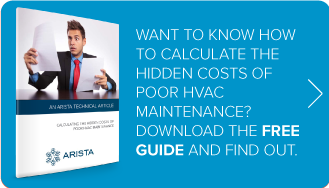We have good news and bad news about your building’s energy consumption. Which do you want to hear first?
Ok, here’s the bad news: you’re probably wasting 30 percent or more of the energy your building uses. According to the US Environmental Protection Agency (EPA), 30 percent is the amount wasted by the AVERAGE building. If you haven’t done much to update your systems and your practices over the years, you could be wasting even more. It’s no wonder your bills are so high and get worse every year.
The good news? If you take advantage of the energy saving tips for commercial buildings, outlined here, you can significantly cut your usage and your bills without adversely affecting the comfort of your building’s occupants. Here’s how:
Smart Strategy #1: Energy Audits & Equipment Upgrades
You can’t reduce your usage until you get an accurate understanding of how much you’re using and why. Start with an audit of your utility bills for the past year. Next, inspect the condition of all your HVAC, plumbing, and lighting equipment, and collect records of any service, maintenance and repairs.
Equipment that’s in poor condition, especially if it’s starting to break down frequently and requires commercial hvac repair, is certainly wasting energy. Do some research and find out how much less a new, more efficient Energy Star model will consume. You may be surprised at how much you can save by upgrading to efficient equipment.
Smart Strategy #2: Operational Timing & Program Controls
Why heat and cool your building when it’s not in use? This is the most obvious step to save energy. But don’t count on remembering to turn down the thermostats and the lights at night; use programmable thermostats (for small operations) and facility management/building automation systems (for larger buildings and complexes) to turn down the heat, air conditioning, and lights during the hours when your building is not occupied.
If you’re really smart, take this strategy to the next level by aligning your building’s operations to reduce the hours when it’s occupied, and therefore needs to be lighted, heated and cooled. For example, shift cleaning schedules to rotate during daytime hours instead of during the evening. This could mean several hours each day that you can save money on energy consumption.
Smart Strategy #3: Education
If you want to significantly cut your usage, everybody needs to be on board. Conduct training sessions with employees or building tenants to teach them about energy consumption measures, such as powering down computers at night and fixing or reporting leaky faucets and running toilets. Let them know that you are monitoring consumption, and even provide incentives for changes that lead to reduced energy bills.
Smart Strategy #4: Improve Insulation
This is not just about walls and windows. Adding insulation around pipes, HVAC ducting, and electrical outlets reduces the amount of air conditioning and heating that is lost without having any impact on your building’s comfort level. For example, if your duct work has not been cleaned or inspected for a long time, it’s likely that the insulation has been compromised over time. It’s probably got lots of holes and tears that leak cool air from the air conditioner and warm air from the furnace. That air never makes it to the registers and the occupied areas of your building, but instead warms and cools the crawl spaces where the ducts are.
Smart Strategy #5: Maintain Your HVAC Equipment.
Chillers, boilers and cooling equipment all lose efficiency when they are not regularly cleaned and maintained. Here are some examples:
- When dust and debris build up on the coils of your air conditioner, heat transfer is compromised and the unit can’t cool as effectively.
- If your heating system uses a steam boiler, you have steam traps that control condensate. If your system has not been inspected for a while, you probably have malfunctioning traps that are constantly releasing steam, causing your boiler to work overtime and driving up your utility bills.
- Regularly changing air filters is critical to keeping dust and contaminants out of the system, as well as maximizing the air flow to your furnace and air conditioner. When air flow is compromised, the system must work harder and run longer to keep your building comfortable, using more energy in the process.
Over time, that coating of grime also causes parts to wear out faster and even shortens the life of your equipment. If you have been ignoring the advice to have your heating and air conditioning equipment maintained at least once per year, you are probably wasting much more energy than you realize.
Proactive service and maintenance is a must for HVAC equipment if you want to save money on energy expenses. Poor maintenance also costs your business in many ways that you may not realize. Want to learn more? Grab a copy of our helpful guide to Calculating the Hidden Costs of Poor HVAC Maintenance.

